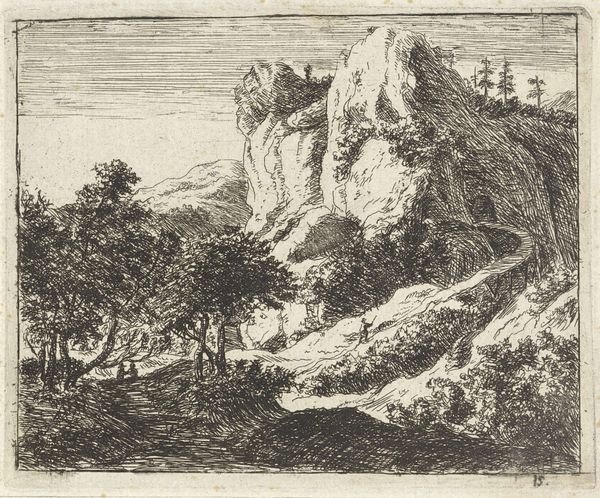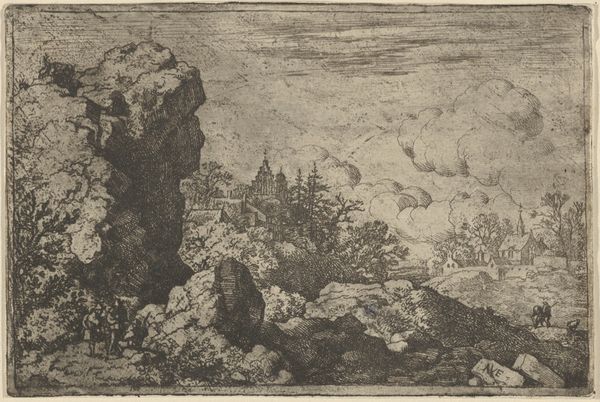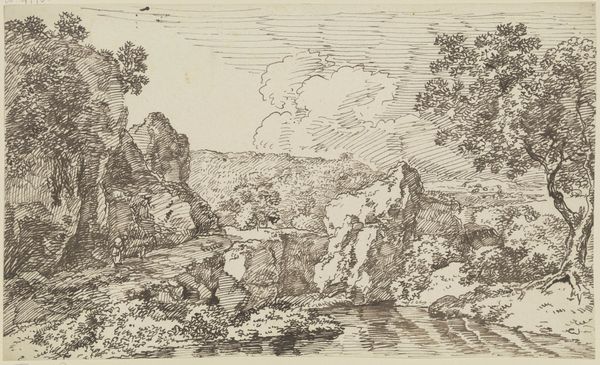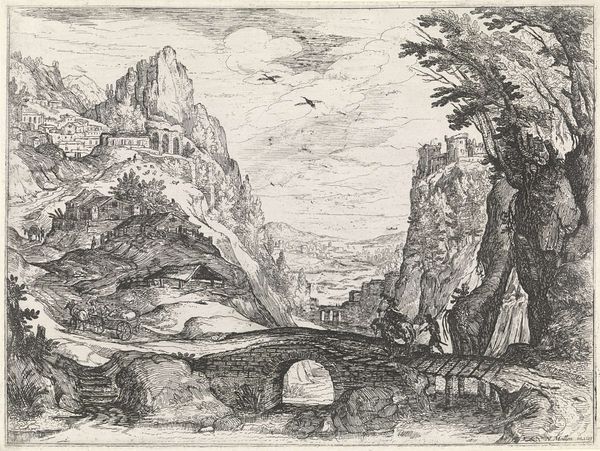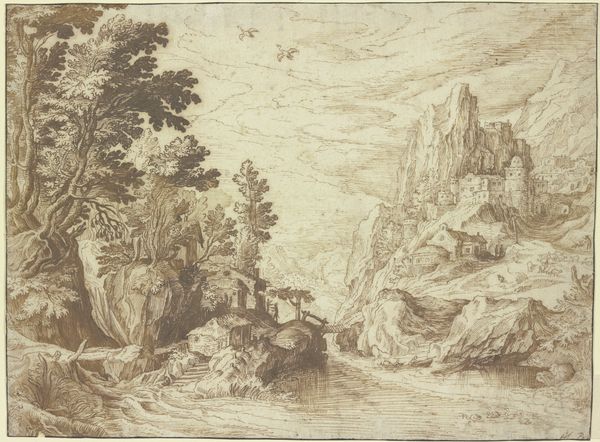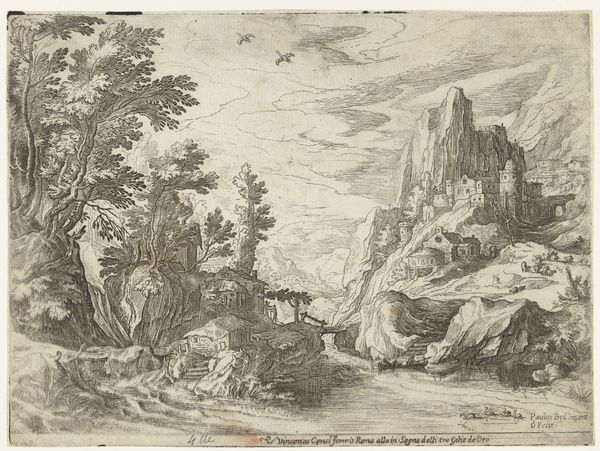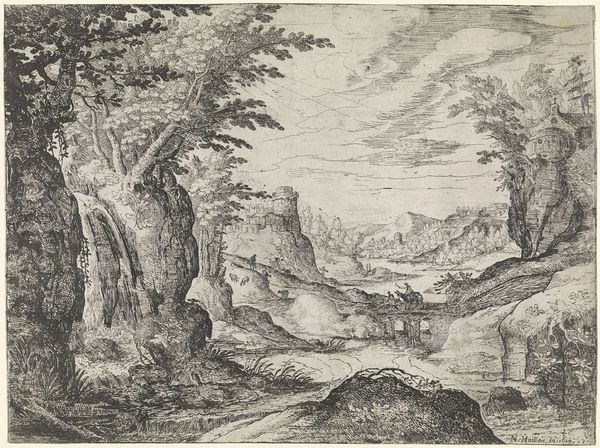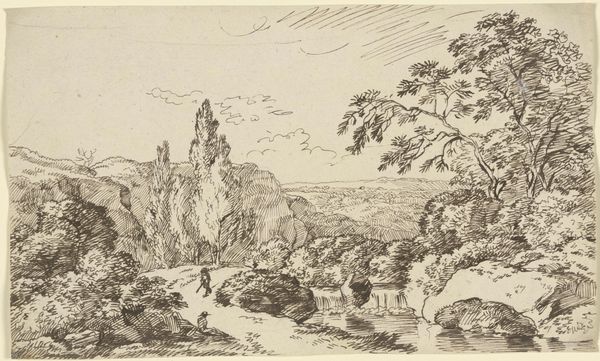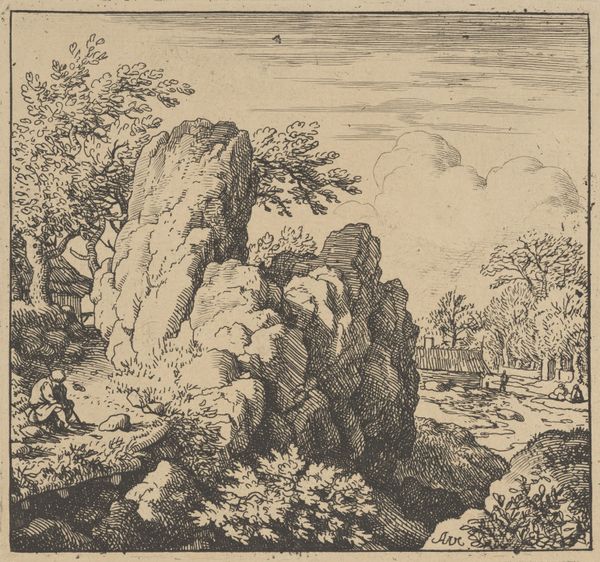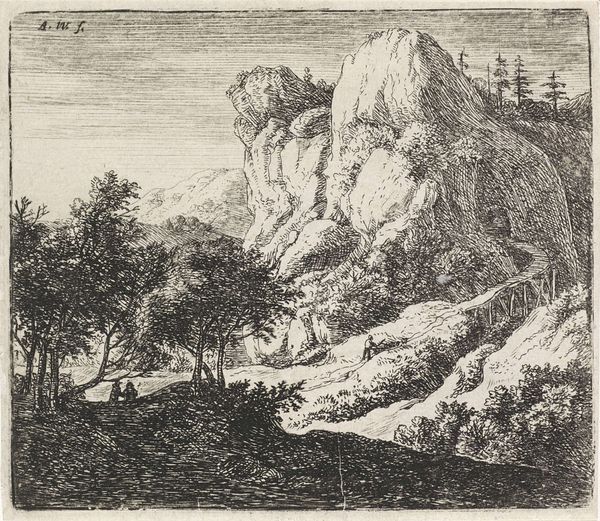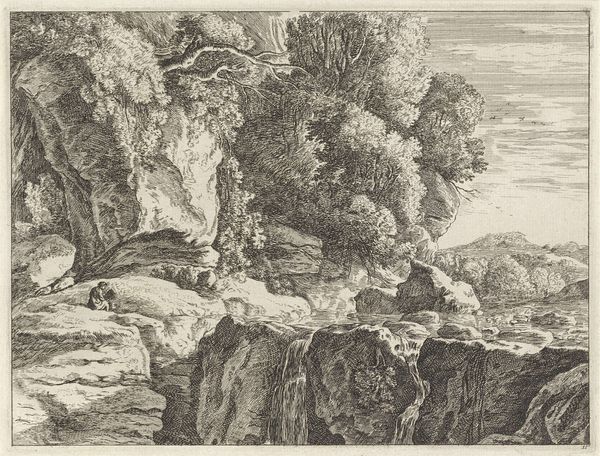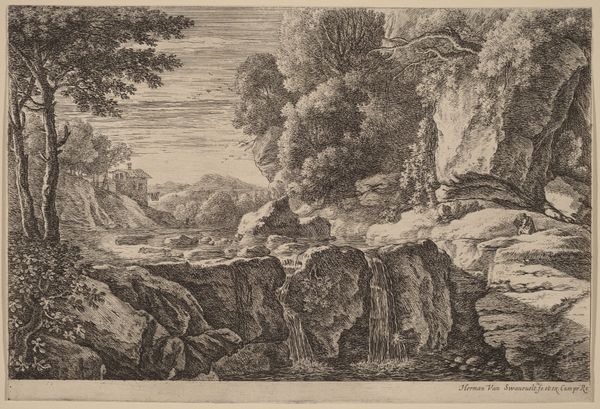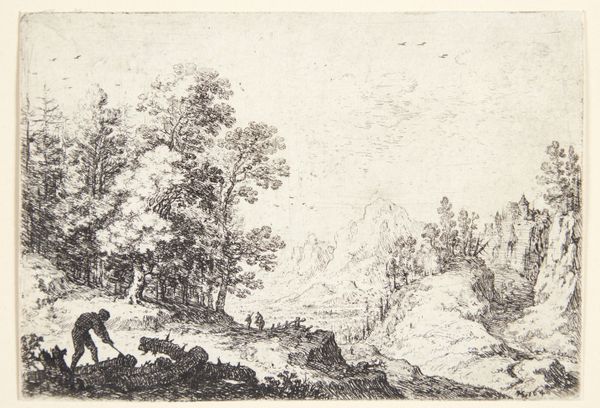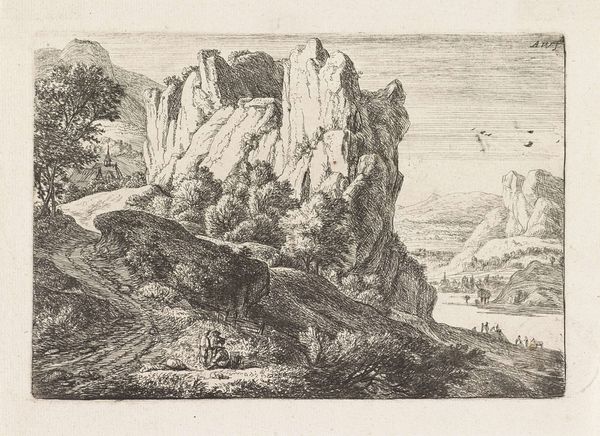
The Little Bridge near the Rock, from the series Set of Landscapes n.d.
0:00
0:00
drawing, print, etching, paper, graphite
#
drawing
# print
#
etching
#
landscape
#
etching
#
paper
#
pencil drawing
#
graphite
Dimensions: 119 × 130 mm
Copyright: Public Domain
Curator: This etching, of undetermined date, is titled "The Little Bridge near the Rock" and comes from the series "Set of Landscapes," created by Herman Naijwincx. It's currently held here at the Art Institute of Chicago. Editor: My first impression is one of wildness tamed, almost a sublime domesticity. The rock is so craggy, yet the small bridge suggests human interaction with this formidable natural landscape. Curator: It's intriguing how Naijwincx utilizes etching, typically a medium for reproducibility, to capture a seemingly untouched, singular view. The landscape genre itself was being codified in this period, often commissioned by burgeoning merchant classes keen on displaying their connection to the land. Editor: Precisely. The "landscape" isn't merely about what's seen but about social dynamics shaping visibility. How did class structures determine who owned, worked on, and even represented the land? We need to consider the implications behind the portrayal of ownership and access. Curator: His technical choices reinforce that dynamic. The deliberate, controlled lines of the etching process mimic the imposition of order onto this chaotic landscape. We also should examine what sort of labor conditions the etcher engaged in and how those affected the artist's product and potential audiences. Editor: And what about the role of travel in shaping his artistic perspective? Did this bridge symbolize freedom, trade, or perhaps conquest and displacement for some? Understanding the movement and exchange facilitated by these landscapes is pivotal in analyzing its contextual importance. The absence of visible labor raises concerns. Curator: While there isn’t explicitly visible labor, the labor needed for building the tiny bridge is subtly depicted in his use of varied, dense mark-making; the details of foliage against the smooth rock hint to me at physical making. Even the birds drawn overhead imply an observer’s active eye… or a merchant traveler. Editor: Those marks can signify oppression, inequality, resource exploitation. I push to find connections between this visual and cultural, class-related histories. Even its absence becomes powerful. What might this depiction silence, erase, or perpetuate? Curator: A valuable inquiry indeed. Analyzing this seemingly innocent landscape can, with careful attention, provoke necessary awareness. Editor: Absolutely. And by connecting the formal elements with their layered cultural implications, we hopefully create dialogue and promote critical engagement with the world around us, even now.
Comments
No comments
Be the first to comment and join the conversation on the ultimate creative platform.
